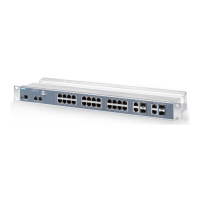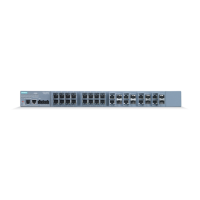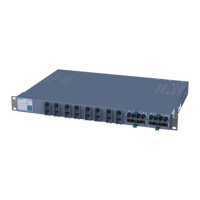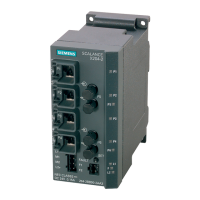Example:
VRID 10 00-00-5e-00-01-0a
VRID 100 00-00-5e-00-01-64
Common IP (Associated IP Addresses)
Figure 1-3 depicts two routers. Both have an IP interface in the network
192.168.0.0/24. Router 1 has the IP address 192.168.0.2, router 2 has
192.168.0.3. With the help of VRRP, an IP address is defined as the address of the
virtual router. This can be one of the real IP addresses actually in use (here,
192.168.0.2 or 192.168.0.3), but it can also be a third IP address as shown in the
Figure (192.168.0.1). All VRRP routers in a group must have the same Associate
IP Addresses.
Selecting the master
The decision of which router in the VRRP group will be the master is made using
the configured priority, along with the parameter "Preempt lower priority Master", or
"Preempt" for short.
If "Preempt" is set, then the router that has the highest configured priority will
always be the master. If the priority is the same, the router that has the higher IP
address on the corresponding IP interface will become the master. If a new router
with a higher priority is connected to the network, a switchover will occur because
the new router will become the master.
If "Preempt" is not set, the router that sends Advertisements first will be the master.
If a new router with higher priority is connected to the network, there will be no
switchover if "Preempt" is inactive.
Using the configuration parameter "Preempt lower priority Master" it is possible to
set whether the network will define a master router deterministically ("Preempt"
turned on) or whether the number of switchovers should be kept as low as possible
("Preempt" turned off).
Refer to the Useful information chapter for more information on the mechanisms
and principles of VRRP.

